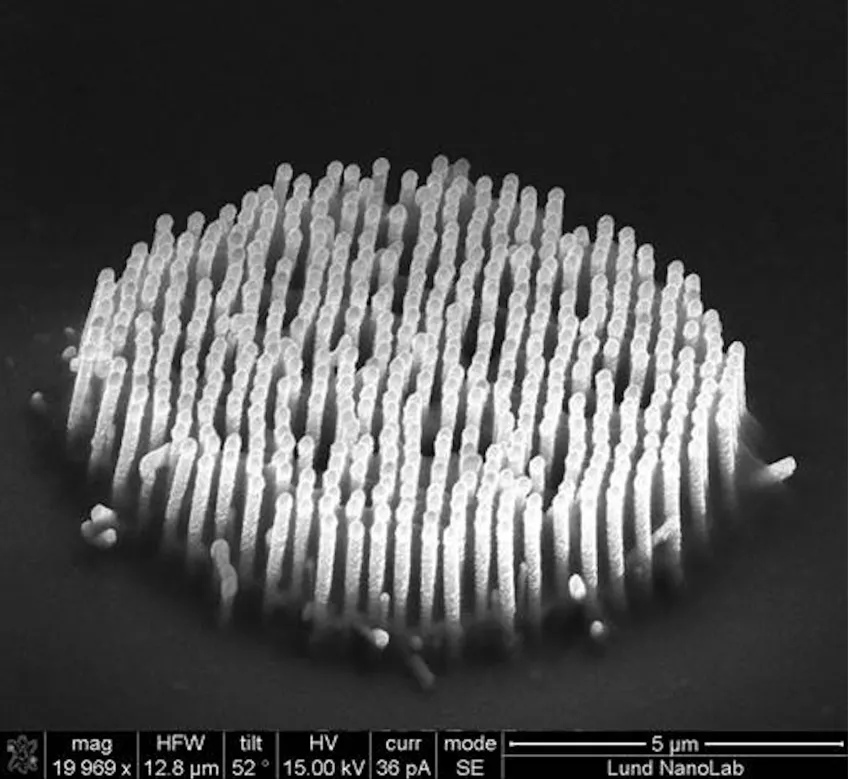Nanoelectrodes for in-vivo neurocommunication
Our objective is to unravel fundamental dynamic neural and glial mechanisms underlying learning-related altered neural network structures and information processing in conscious individuals using implantable and biocompatible nanostructured neural interfaces.
Research area:
Nanostructured electrodes for long-term communication with neuronal networks in the awake brain
One of the greatest scientific challenges is to understand how the brain functions in physiological and pathological conditions. To this end, detailed and high-quality data on the information processing in multiple neurons identified with respect to their phenotypes and connections in the brain is needed.
Implantable electrodes for long term monitoring and interaction with multiple neurons have the potential to provide such information but will only be useful if truly biocompatible, i.e. if they themselves do not cause significant tissue reactions such as inflammation, neuronal loss and glial encapsulation. To address these challenges, we have for more than a decade systematically researched underlying mechanisms for these tissue reactions and developed new surgical methods, ultraflexible constructions and novel vehicles for enabling implantation of ultraflexible electrodes equipped with fragile nanostructures into soft tissue.
Ongoing work aims at investigating the impact of different types of nanostructured ultraflexible leads on nearby neurons and glia cells in the brain and recording properties. Novel nanoparticles are developed for local delivery of e.g. anti-inflammatory drugs and anchoring to prevent migration of implanted electrodes. Combinations of biocompatible light guides and electrodes are developed to allow identification of phenotype (by using optogenetic methods) of the neurons recorded from in mice.
In addition, ongoing work aims at developing a new generation of biocompatible electrodes for highly specific and personalized deep brain stimulation to be used to treat neurological disorders such as chronic pain, motor disorders and epilepsy. Proofs of concept have been reached in animal studies.
Key publications
Local delivery of minocycline‑loaded PLGA nanoparticles from gelatin‑coated neural implants attenuates acute brain tissue responses in mice. Holmkvist et al. J Nanobiotechnol (2020) 18:27
https://doi.org/10.1186/s12951-020-0585-9
Download Local delivery of minocycline‑loaded PLGA nanoparticles from the publisheer's site (pdf, 2.6 MB, new window)
Nanowire-Based Electrode for Acute In Vivo Neural Recordings in the Brain. Suyatin DB, Wallman L, Thelin J, Prinz C, Jörntell H, Samuelsson L, Montelius L, Schouenborg J. 2013, PLOSOne 8(2): e56673.
DOI: 10.1371/journal.pone.0056673.
See article nanowire-based electrode for neural recordings at the publisher's site
An array of highly flexible electrodes with a tailored configuration locked by gelatin during implantation-initial evaluation in cortex cerebri of awake rats. Agorelius J, Tsanakalis F, Friberg A, Thorbergsson P T, Pettersson L and Schouenborg J. Front Neurosci. 2015 Sep 25;9:331.
DOI: 10.3389/fnins.2015.00331.
See article An array of highly flexible electrodes at the publisher's site
A Bit-Encoding Based New Data Structure for Time and Memory Efficient Handling of Spike Times in an Electrophysiological Setup. Ljungquist, B., Petersson, P., Johansson, A.J., Schouenborg, J., Garwicz, M. Neuroinform (2018) 16: 217.
DOI: doi.org/10.1007/s12021-018-9367-z
See article A Bit-Encoding Based New Data Structure at the publisher's site
Contact person:
Collaborators:
- Nils Danielsen
- Martin Garwicz
- Ulf Nilsson
- Lars Wallman
- Ole Kiehn (Panum, DK)
- Lina Pettersson
- Jonas Thelin
- Palmi Thorbergsson


